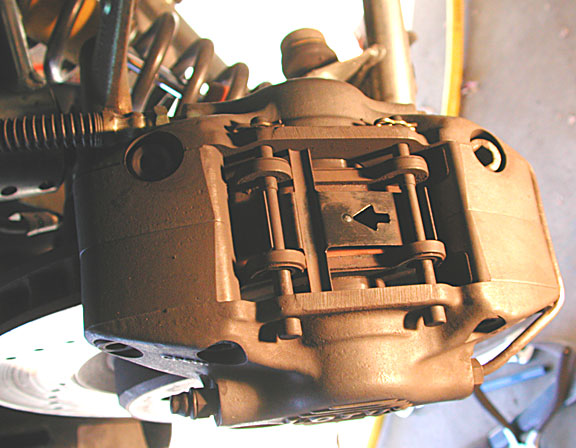Just fixed annoying brake rattle.
Turns out it can be fixed by ... wait for it ..... the
anti-rattle spring plate
See the little hook along the top of this plate - which hooks onto the top pin - call it
a
Also see the horizontal wider bit below the hook - call it
b
b fits under the extension of the backing plates, around top pin hole, that sticks out backwards.
The pin holes in back plate are much bigger than the pins so the pad can move, expand and be pushed UP against caliper on braking.
When the spring is new (or tweaked), b holds the pads higher, nearer to the top surface inside the caliper which they are pressed against on braking. This also means they dont rattle - which is the pads especially when hot / expanded bouncing on the lower surface of the caliper.
The cure is: buy new anti-rattle spring plates AND/OR make sure they hold the pads HIGH in the caliper (braking position).
I found my 26K old anti-rattle spring plates allowed ~1mm free play which let the pads bounce about enough to hit the lower surface of the caliper. The free play
downwards, can be reduced by reducing the distance between a & b.
I found the easiest way to do this was the very slightly squeeze the hook, reducing its inner radii, and so reducing the a to b gap.
This simply raised the pads by about 0.5mm, without adding any more friction or restriction in movement.
The pin holes in brake back plates are now held so that pins sit below centre - as pads sit higher.
After getting annoyed by this rattle coming and going, and loads of surprising miss-info 'bum-steers', on various forums etc. this worked.
What bends the anti-rattle plates, so they need renewal/tweaking, and make the rattle worse, is
braking in reverse, especially when pads are cold, or slightly smaller higher performance pads (which might be smaller for wider expansion tolerances), this pulls the pads DOWN, stretching the anti-rattle plate in the wrong direction, hence allowing the pads rattle on the bottom surface.
Please note: all "you do at own risk" provisos apply to these notes.





